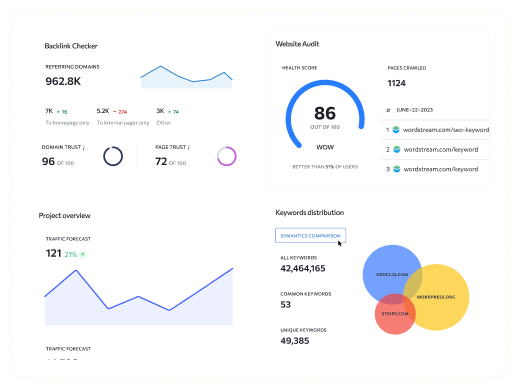Navigating the world of SaaS sales and marketing can feel like decoding a cryptic language at times. With a plethora of acronyms and abbreviations thrown around, it’s easy to get lost in translation. To help demystify this jargon, we’ve compiled a comprehensive list of SaaS sales and marketing acronyms and their meanings:
A:
- ARR – Annual Recurring Revenue: The predictable, recurring revenue generated from subscriptions on an annual basis.
- ACV – Annual Contract Value: The total value of a customer’s contract over a 12-month period.
B:
- BDR – Business Development Representative: A sales role focused on generating and qualifying leads.
- B2B – Business to Business: Transactions or interactions between businesses rather than between a business and individual consumers.
C:
- CAC – Customer Acquisition Cost: The cost associated with acquiring a new customer, including sales and marketing expenses.
- CRM – Customer Relationship Management: Software used to manage interactions with current and potential customers.
D:
- D2C – Direct to Consumer: Selling products or services directly to consumers without intermediaries.
E:
- ERP – Enterprise Resource Planning: Software that integrates core business processes such as finance, HR, and inventory management.
F:
- FTP – File Transfer Protocol: A standard network protocol used to transfer files between a client and server on a computer network.
G:
- GTM – Go-to-Market: The strategy and process used to bring a product or service to market.
H:
- HRIS – Human Resources Information System: Software that manages various HR functions, such as payroll, benefits, and employee records.
I:
- IaaS – Infrastructure as a Service: Cloud computing infrastructure provided as a service, allowing users to access and manage virtualized resources over the internet.
J:
- JIT – Just-in-Time: An inventory management strategy that aims to minimize carrying costs by ordering inventory only when it is needed.
K:
- KPI – Key Performance Indicator: Metrics used to evaluate the success of an organization or specific activities.
L:
- LTV – Customer Lifetime Value: The predicted net profit attributed to the entire future relationship with a customer.
M:
- MRR – Monthly Recurring Revenue: The predictable, recurring revenue generated from subscriptions on a monthly basis.
- MQL – Marketing Qualified Lead: A lead that has been deemed more likely to become a customer based on their engagement with marketing efforts.
N:
- NPS – Net Promoter Score: A measure of customer satisfaction and loyalty based on the likelihood of customers to recommend a company’s products or services.
O:
- OEM – Original Equipment Manufacturer: A company that produces parts or equipment that are used in another company’s products.
P:
- PQL – Product Qualified Lead: A lead that has demonstrated interest in a product by engaging with it or experiencing its value firsthand.
Q:
- QA – Quality Assurance: The process of ensuring that products or services meet specified requirements and standards.
R:
- ROI – Return on Investment: A measure of the profitability of an investment, calculated as the ratio of net profit to the initial investment cost.
S:
- SaaS – Software as a Service: Software delivered over the internet as a subscription service, eliminating the need for users to install and maintain it locally.
- SQL – Sales Qualified Lead: A lead that has been deemed ready for direct sales contact based on specific criteria.
T:
- TAM – Total Addressable Market: The total revenue opportunity available for a product or service in a specific market.
U:
- UI – User Interface: The graphical layout of an application, website, or software that users interact with.
V:
- VC – Venture Capital: Funding provided by investors to startups and small businesses with high growth potential.
W:
- WFM – Workforce Management: Software that helps organizations optimize employee productivity and performance.
X:
- XML – Extensible Markup Language: A markup language that defines rules for encoding documents in a format that is both human-readable and machine-readable.
Y:
- YTD – Year to Date: The period beginning from the start of the current calendar year up to the present date.
Z:
- ZMOT – Zero Moment of Truth: The moment when a consumer researches a product or service online before making a purchasing decision.
FAQs about SaaS Sales & Marketing Acronyms:
Why are acronyms and abbreviations important in SaaS sales and marketing?
Acronyms and abbreviations help streamline communication and convey complex concepts in a concise manner, saving time and reducing ambiguity.
How can I stay updated on new SaaS sales and marketing acronyms?
To stay updated on new acronyms and abbreviations in the SaaS industry, consider following industry publications, attending conferences, and networking with professionals in the field.
Are there any resources available to help me understand SaaS sales and marketing acronyms better?
Yes, there are several online resources, including glossaries, blog posts, and industry-specific publications, that provide explanations and definitions of SaaS sales and marketing acronyms.
Should I use acronyms and abbreviations in my sales and marketing communications?
While acronyms and abbreviations can help streamline communication, it’s essential to ensure that your audience understands them. When in doubt, it’s better to spell out terms or provide explanations to avoid confusion.
Are there any tools available to help me manage SaaS sales and marketing acronyms?
Yes, there are various CRM and project management tools available that allow you to create custom glossaries or databases of acronyms and abbreviations for easy reference during sales and marketing activities.



